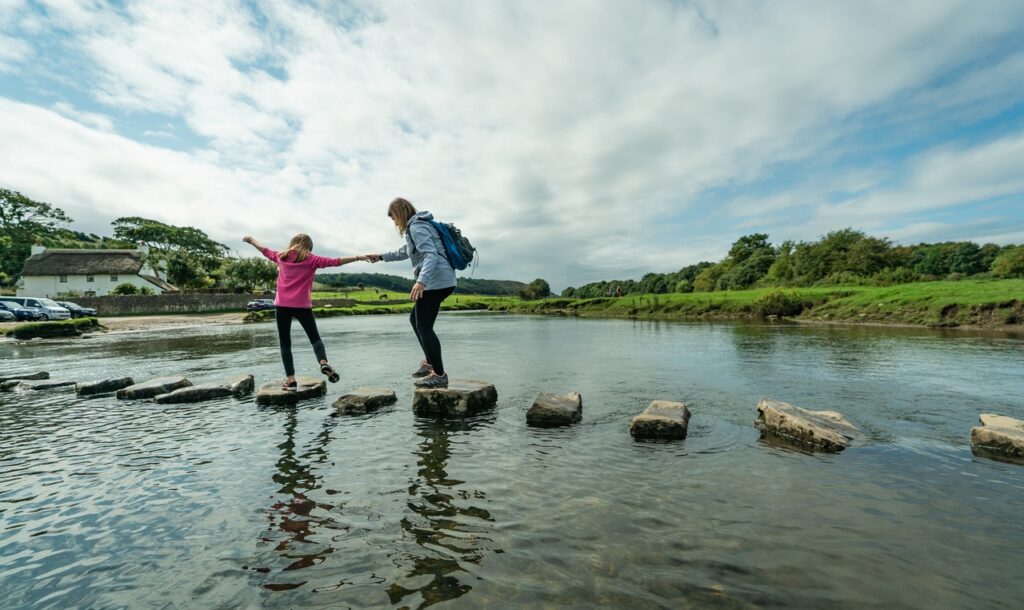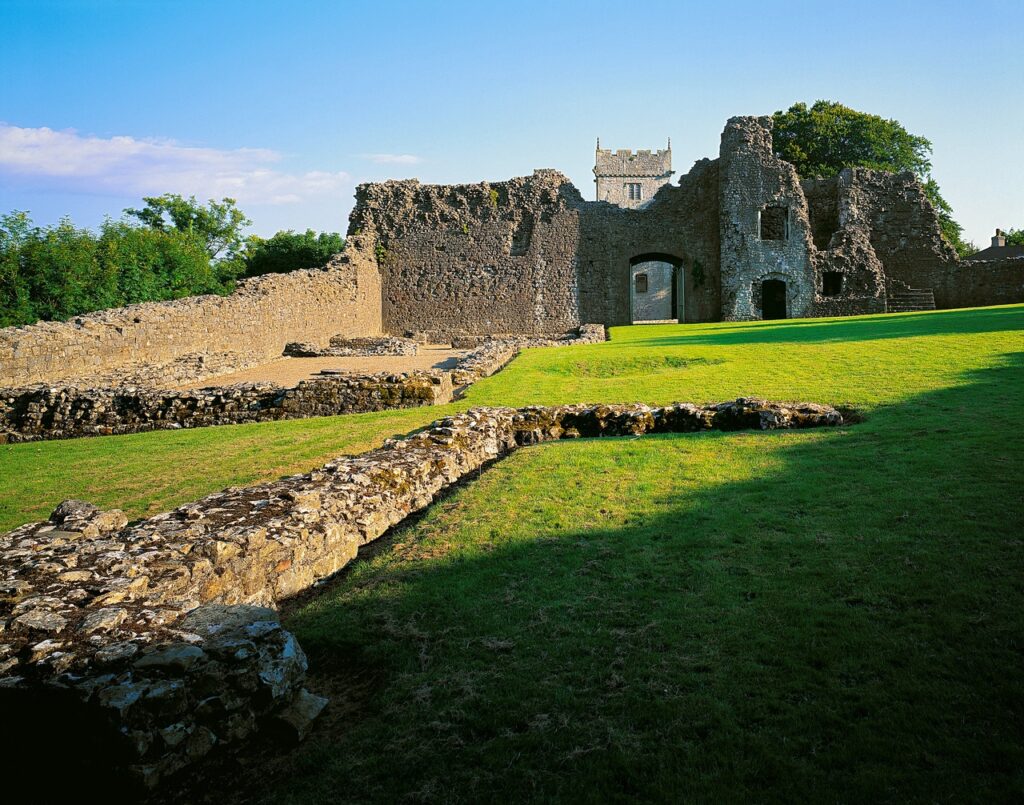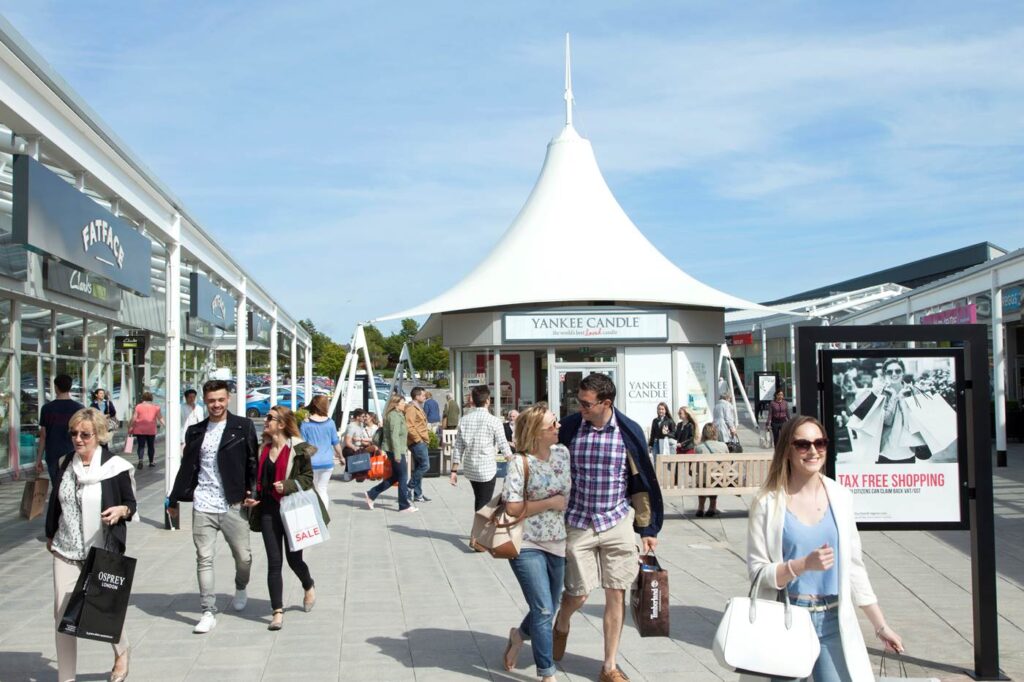Bridgend

BRIDGEND is a town in Bridgend County Borough in Wales, 20 miles west of Cardiff and 20 miles east of Swansea. The town is named after the medieval bridge over the River Ogmore. The River Ewenny also flows through the town.
Historically a part of Glamorgan, Bridgend has greatly expanded in size since the early 1980s. The town centre is mainly pedestrianised and ongoing works have included Brackla Street Centre redevelopment to Bridgend Shopping Centre, Rhiw Car Park redevelopment and the upgrade of the Bridgend Life Centre and demolition of Sunnyside offices to accommodate a large retirement complex.
Several prehistoric burial mounds have been found in the vicinity of Bridgend, suggesting that the area was settled before Roman times. The A48 between Bridgend and Cowbridge has a portion, known locally as ‘Crack Hill’, a Roman road and the ‘Golden Mile’ where it is believed Roman soldiers were lined up to be paid.
Newcastle Castle (on Newcastle Hill, overlooking the town centre, 1106) and Ogmore Castle (1116) were built by Robert Fitzhamon and William de Londres, respectively. About 2 miles north-east of Ogmore Castle, Maurice de Londres founded the fortified Benedictine Ewenny Priory in 1141.
Bridgend developed at a ford on the River Ogmore, which was on the main route between east and west Wales. Just north of the town is the confluence of three rivers, the Ogmore, the Llynfi, and the Garw. South of Bridgend, the River Ewenny merges with the River Ogmore and flows into the Bristol Channel.
In the 15th Century, a stone bridge was first built as a permanent connection between the two sides of the Ogmore. Originally, this bridge had four arches, but in the 18th Century, a massive flood washed two of them away. The rest of the bridge still stands and remains a focal point of the town: aesthetic restoration took place in 2006.

Bridgend grew rapidly into an agricultural town. It became an important market town, a status it retained until the late 20th Century.
The discovery of coal in the south Wales valleys north of Bridgend had a massive impact on the town. The first coal mining operations opened north of Bridgend in the 17th Century; the Llynfi Valley was the first to be industrialised.
Bridgend itself never had coal deposits and remained a market town for some time, but the valleys of the three rivers grew into an important part of the south Wales coalfields.
Ironworks and brickworks (notably at Tondu) were also established in the same period by John Bedford, although the ironworks faltered after his death and ceased operating entirely in 1836.
The Great Western Railway arrived and Bridgend was at the junction between the main London to Fishguard line and the branch to the three valleys. Frequent coal trains took coal down the valleys; and when the Vale of Glamorgan railway opened, coal could be sent directly to port at Barry or via other branch lines to Porthcawl.
Several quarries opened in and around Bridgend town centre; some remnants of these can still be seen today near Brackla. An engine works was opened in the town and a larger farmers’ market also opened in the town centre, where it remained until the 1970s.
In 1801, the population of what is now Bridgend County was around 6000. By the beginning of the 20th Century this had risen to 61,000. By this time, Bridgend was a bustling market town with prosperous valleys to the north, a thriving community and good links to other towns and cities.
In the Second World War, Bridgend had a prisoner of war camp at Island Farm and a large munitions factory (ROF Bridgend – known as the ‘Admiralty’) at Waterton, as well as a large underground munitions storage base at Brackla (known as the ‘8Xs’). This was an overspill of the Royal Arsenal, Woolwich.
At its peak, the arsenal had 40,000 workers, many of them women. Large numbers of them were transported by bus from the Rhondda and the valleys.
The factory complex had three sites in Bridgend, all linked together by a large network of railways. Many reminders of the factory sites remain to this day – Brackla Ordnance Site.
Two of the munitions-storage magazines in the Brackla ROF site were converted to a regional government headquarters during the Cold War. It later passed into the hands of a private company.

Bridgend remained a solid market town after the war. In 1948, Newbridge Fields (a short distance from the town centre) hosted the 1948 National Eisteddfod. Bridgend County hosted the Urdd Gobaith Cymru National Eisteddfod in 2017.
In 1960, the River Ogmore burst its banks and flooded the town centre. Subsequent floods and extreme weather led the Welsh Water Authority to develop concrete flood defence walls along the banks of the River Ogmore in the town centre.
Bridgend was chosen to become the headquarters for South Wales Police.
In the 1970s, Bridgend began to see the catalyst of arguably its biggest growth period. The ‘missing section’ of the M4 motorway was constructed around the town, plans were afoot to change the Waterton Admiralty into an industrial estate, and the water supply was improved including new sewage treatment works near Ogmore. Two major multi-national corporations, the Ford Motor Company and Sony, set up factories in or on the outskirts of the new Bridgend Industrial Estate (former Waterton Arsenal).
The development of the Brackla Housing Estate in the 1980s, housing developments at Broadlands to the south-west of the town centre and the continuing expansion of Brackla to the north-east caused Bridgend’s population to swell dramatically.
Due to this, traffic congestion and a lack of parking facilities within the town became important issues in the area. In 1997, a new link road/bypass was built to connect the town centre directly to the M4 motorway, as well as redirect traffic around the town centre.
In 2004, an award-winning new bus station was constructed and traffic movements around the town centre were altered. Local committees, together with the council, started to use the pedestrianisation of the town centre to its advantage, culminating in several fairs including Continental Markets, Celtic Festivals, a small Mardi-Gras, and seasonal markets and events. Bridgend Council estimated in 2009 that these events had brought 900,000 visitors to the town and generated around £53 million for the local economy.
About £2.5 million of European funding was used to create a ‘riverside café culture’ by constructing a walkway along the River Ogmore, which was completed in March 2009.
Bridgend recovered quickly from the decline of traditional industries, particularly coal-mining due to other alternative forms of employment.
Ford’s engine plant near Waterton used to employ around 2,000 workers and was one of the area’s largest employers, working on a range of low carbon ‘EcoBoost’ engines. Ford had invested £315m in the Bridgend plant between 2004 and 2009 before the Ford plant closed in September 2020.
IT Consultancy Group CGI have an office in Bridgend, and Lidl has also set up its Welsh headquarters and distribution site at Waterton. Zoobiotic, a company specialising in maggot therapy, has its facility near Bridgend town centre. Also, since 1983, famous dart board producer Winmau has based its global headquarters in Bridgend.
Others include Ortho-Clinical Diagnostics, Staedtler, engineering consultancy Skanska, aeronautic maintenance and project management company TES Aviation and home accessories manufacturer Dekor plc. The Semiconductor Photomask Company, Photronics Inc, has had a manufacturing operation for over 20 years at the Ewenny Science Park.
However, there have been significant economic blows to Bridgend including Sony’s closure of the Bridgend plant and downsizing of the Pencoed plant.
In the town centre the main retail shopping areas are the Rhiw Shopping Centre (containing Bridgend Market), Adare Street, Caroline Street, Derwen Road, Nolton Street, Queen Street, Dunraven Place, Market Street and Cheapside (home of the Brackla Street Centre and Asda store).
There are out-of-town shopping areas at Waterton, near the A473, on Cowbridge Road and at The Derwen, Junction 36 of the M4, home to the Bridgend Designer Outlet. McArthur Glen, a luxury outdoor shopping area offering designer and high-street fashion brands at discounted prices, opened in 1998.

A new Securicor-operated prison (HM Parc Prison) was built near Coity in the late 1990s. The prison opened in November 1997.
Bridgend railway station has regular services to Cardiff Central, Bristol Parkway and London Paddington to the east; Port Talbot Parkway, Neath, Swansea and the West Wales Line to the west; and Maesteg to the north. There are also services to Manchester Piccadilly.
An east–west cycle route has been constructed from Brackla through to Broadlands and into Cefn Glas. Bridgend is on the National Cycle Route and there are off-road spurs from the Celtic Trail to the town centre and a community route in the Ogmore Valley. Glyncorrwg and the Afan Valley about 12 miles north of Bridgend near Maesteg is well knowb for its mountain bike trails.
Bridgend town has three comprehensive schools: Archbishop McGrath Catholic Comprehensive, Brynteg Comprehensive and Bryntirion Comprehensive. Brynteg is renowned for its rugby alumni, including JPR Williams, Rob Howley, Gavin Henson, Mike Hall and Dafydd James. Prominent athletes in other sports have also attended, including top female cyclist Nicole Cooke.
Bridgend College is the town’s further education and higher education provider; it primarily offers vocational courses and GCSEs. Bridgend College has its own residence for students aged 16+ with learning difficulties and physical disabilities who come to the college from all over Wales.
Since the closure and redevelopment of Bridgend General Hospital in the 1990s, acute-care and accident and emergency services have been provided by the Princess of Wales Hospital.
Those Damn Crows, Bullet for My Valentine and Funeral for a Friend are rock/metal acts from the borough which along with Jayce Lewis have received mainstream recognition.
Bryan Adams played to a 15,000 crowd at Brewery Field stadium in the town in 2006.
Bridgend Ravens (formally Bridgend RFC) are a semi-professional rugby union which formed in 1878 and play in the Welsh Premier Division. They play their home matches at the Brewery Field, which has been their home on and off since 1920. The club have been Welsh champions five times and have won the WRU Challenge Cup on two occasions. New Zealand won on their visit in 1978, but Bridgend have beaten Italy, Western Samoa and Australia.
Bridgend Athletic RFC and Bridgend Sports RFC are both members of the Welsh Rugby Union.
The Celtic Warriors, formed in 2003, are a defunct regional rugby union team that was mainly based at the Brewery Field in Bridgend. When regional rugby was enforced by the Welsh Rugby Union, Bridgend RFC and Pontypridd RFC, who were both professional clubs at the time, merged to create the Celtic Warriors as one of the five new regional rugby teams in Wales. However, they were dissolved after one season due to financial problems that had plagued the club. The team finished fourth out of 12 in the Celtic League in their only season of existence.
The Ospreys were formed in 2003 after the merger of Neath RFC and Swansea RFC. Bridgend became part of this region following the demise of the Celtic Warriors. Although the Ospreys play their home matches at the Liberty Stadium in Swansea, since 2010 they have played their home Anglo-Welsh Cup games at the Brewery Field.
Bridgend had two football teams, Bridgend Town AFC, and a Bridgend suburb side Bryntirion Athletic FC. In 2013, the two clubs joined to form Pen-y-Bont FC who, following promotion in 2019, went on to play in the Cymru Premier, the top level of Welsh football.
Bridgend’s geographical position means big south Wales rivals Cardiff City and Swansea City both pick up support from the town.
Bridgend was home to Super League rugby league team the Crusaders, who were based at the Brewery Field. The Crusaders’ application for a Super League licence was granted by the Rugby Football League in July 2008. The decision elevated the club from National League One to compete in Super League XIV from 2009.

For the 2010 Super League season, Crusaders initially announced they would play at Newport’s Rodney Parade ground for two seasons. However, in the run-up to the new season the Celtic Crusaders franchise was sold by owner Leighton Samuel to Wrexham Football Club parent company Wrexham Village Ltd and the side moved to Wrexham, playing home fixtures at The Racecourse Ground.
Bridgend’s second rugby league side, based at Porthcawl, is the Bridgend Blue Bulls.
Bridgend has local cricket clubs including Bridgend Town CC and Great Western CC, a men’s and women’s hockey club, golf courses, and tennis and bowls facilities at the local club, the Bridgend Lawn Tennis and Bowls Association.
Notable people associated with or from the area include actor Owen Teale, Welsh First Minister Carwyn Jones, journalist and newsreader Huw Edwards, fashion designer David Emanuel, actress Ruth Jones, singer Steve Strange and a host of sports stars such as Olympic marathon runner Steve Brace, 2008 world triathlon champion Helen Tucker, Paralympian Aled Davies, Davis Cup tennis player Gerald Battrick, European Tour golfer Rhys Davies and rugby players Scott Gibbs, Jonathan Humphreys, Alan Phillips, Gareth Thomas, Steve Fenwick and JJ Williams.
(sources include wikipedia, Visit Bridgend)
Back to HOME PAGE